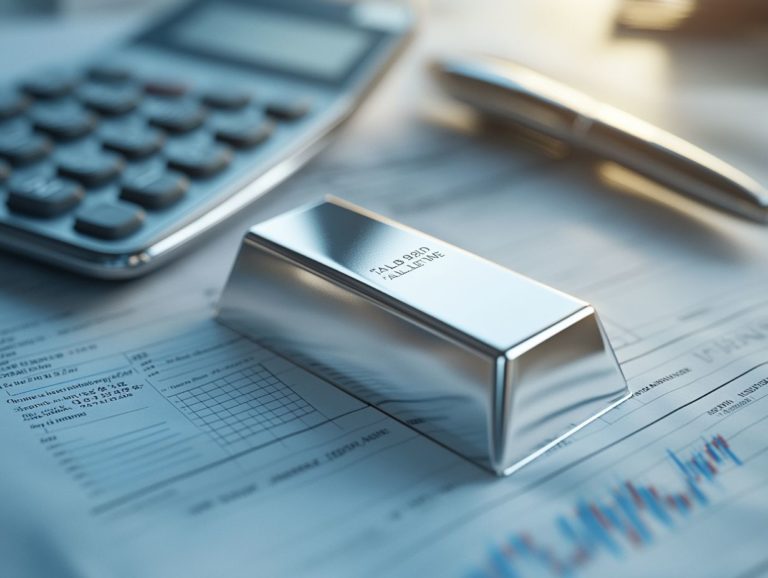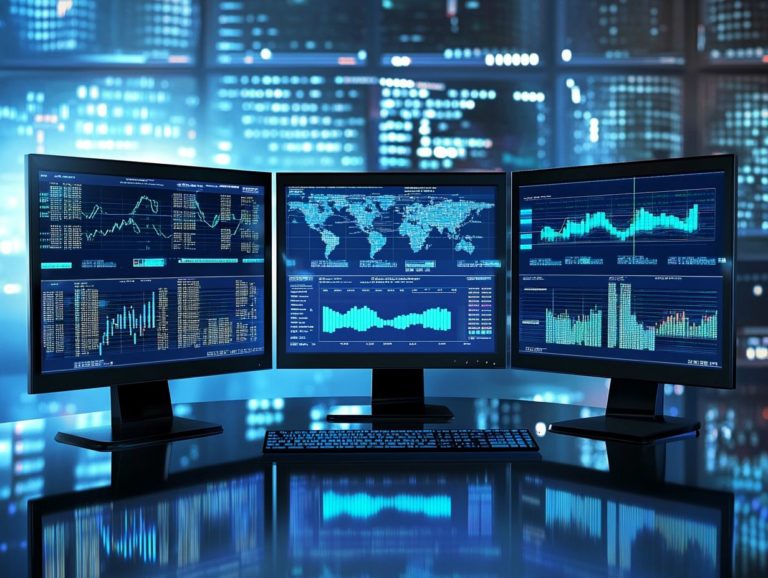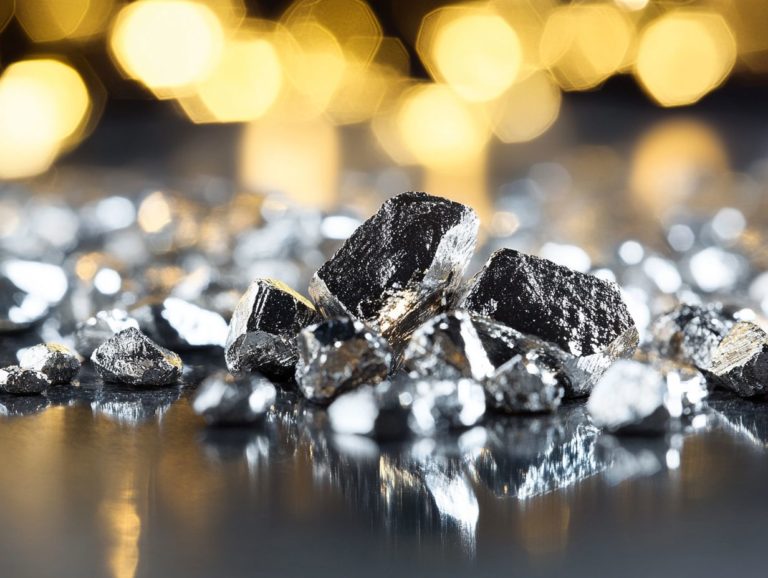The Evolution of Platinum in Investment Markets
Platinum, often overshadowed by gold and silver, boasts a rich history as both a valuable metal and a distinctive investment opportunity.
Join us as we dive into the exciting world of platinum, exploring its market dynamics!
From its early roles in jewelry and industry to its emergence in the investment landscape, platinum has captured attention for its potential. This exploration delves into the current state of the platinum market, analyzing supply and demand dynamics, comparing it to other precious metals, and uncovering the benefits and challenges of investing in platinum.
Whether you re a seasoned investor or simply curious, you ll uncover the nuances that make platinum a truly compelling asset.
Contents
- Key Takeaways:
- The History of Platinum as an Investment
- Current State of the Platinum Market
- Benefits of Investing in Platinum
- Risks and Challenges in Platinum Investment
- Frequently Asked Questions
- What is the history of platinum as an investment metal?
- How has the role of platinum in investment markets changed over time?
- What factors have influenced the evolution of platinum in investment markets?
- What makes platinum a smart investment?
- How has the demand for platinum in investment markets changed in recent years?
- What are some potential benefits and risks of investing in platinum?
Key Takeaways:
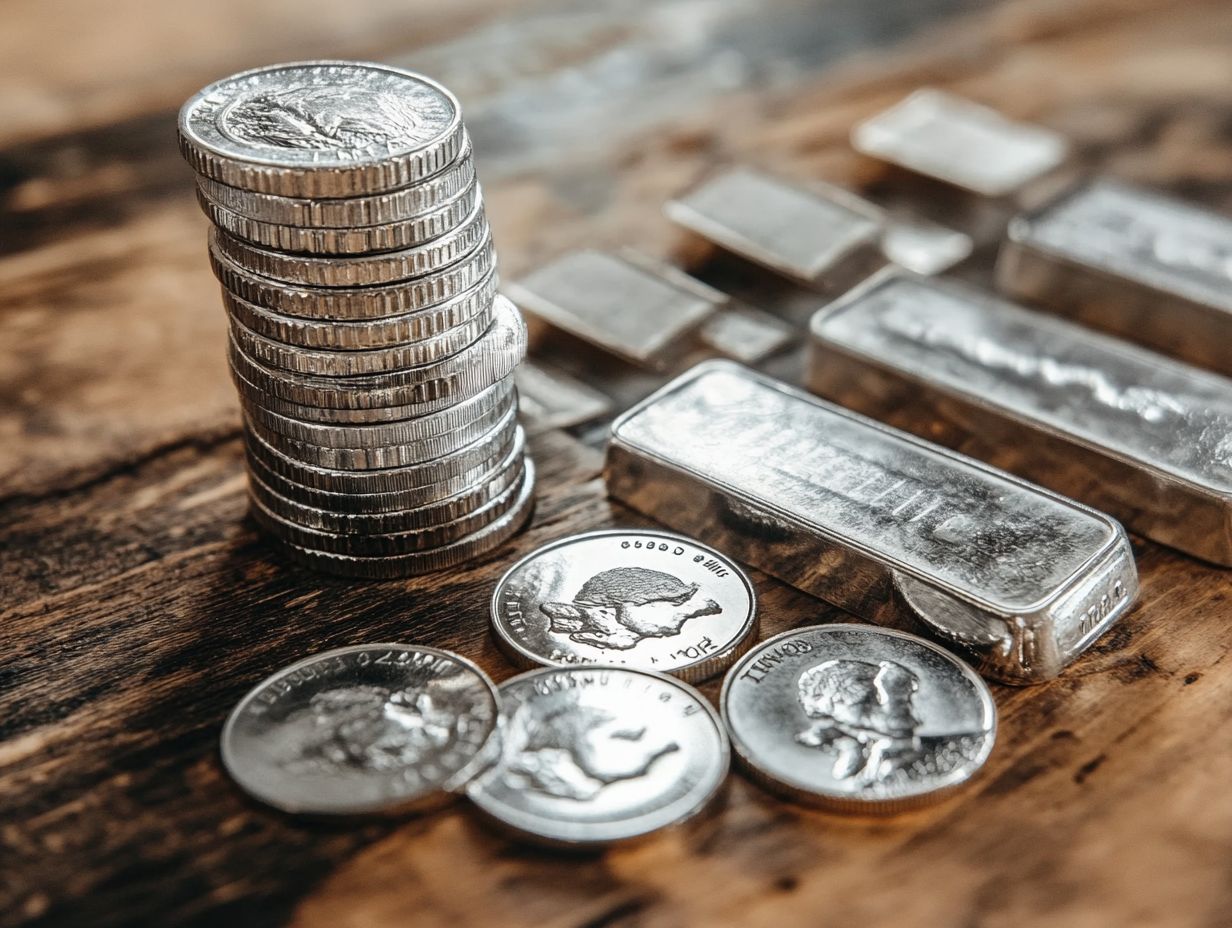
- Platinum, once overlooked, is finally gaining the recognition it deserves!
- Understand how supply and demand shape this unique market!
- Unlock the potential for growth while being mindful of the risks!
The History of Platinum as an Investment
Platinum’s journey began in ancient civilizations, where its rarity and unique properties captivated many. Initially showcased in artifacts such as the Egyptian sarcophagus and the Casket of Thebes, platinum’s charm has transformed over the centuries.
As mining technologies advanced in regions like South Africa, Russia, and Colombia, its potential as a precious metal blossomed, making it a sought-after choice for both exquisite jewelry and industrial applications.
Early Uses and Value
Platinum has long been celebrated for its remarkable properties, including an impressive resistance to tarnish and corrosion. Various cultures have recognized its rarity and allure, often linking it to wealth and status. In South America, for example, indigenous peoples crafted stunning jewelry from platinum, valuing it far more than gold.
Throughout the centuries, platinum emerged as a symbol of prestige, particularly in 19th and 20th-century Europe, where artisans gravitated toward it for their most intricate designs. This preference solidified platinum’s reputation as a material of choice and underscored its role as a testament to exceptional craftsmanship and rich cultural significance. In contrast, the history of gold as an investment highlights its enduring appeal in the financial world.
Shift to Investment Market
Platinum’s transformation into a sought-after investment is remarkable. You can trace this evolution back to various economic conditions and shifts in consumer preferences, notably characterized by a rising industrial demand.
Over the last decade, the automotive sector has been pivotal, as platinum is crucial for devices that help reduce car emissions known as catalytic converters.
Statistics reveal that platinum prices have demonstrated impressive resilience, often standing in comparison to gold and silver. Investors increasingly recognize its intrinsic value, with market trends indicating a significant uptick in interest from institutional investors eager to diversify their portfolios. For those interested in the latest shifts, exploring investment trends: palladium vs. platinum can provide valuable insights.
Current State of the Platinum Market
Today, the platinum market is a balancing act of supply and demand. Global trends, industrial applications, and the growing allure of platinum as a preferred investment vehicle, particularly through instruments such as exchange-traded funds (ETFs), shape this delicate equilibrium.
Are you ready to explore the potential of platinum investments? Let’s uncover more together!
Supply and Demand Factors
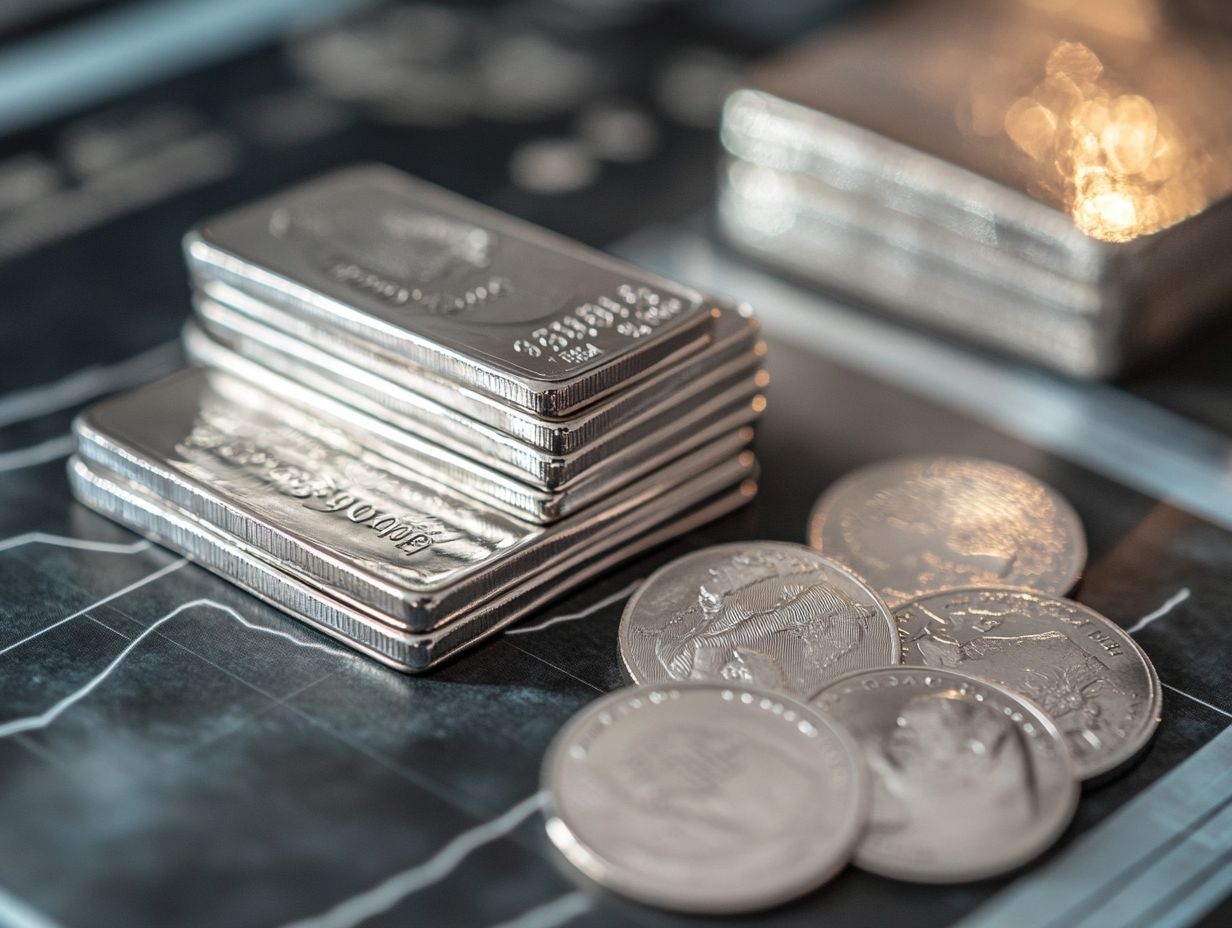
Supply and demand factors are pivotal in shaping the pricing and availability of platinum. These factors are significantly influenced by mining operations in South Africa, Russia, and Canada, along with the evolving industrial applications of this precious metal.
Mining disruptions, like labor strikes or strict environmental rules, can cut production significantly. Geopolitical tensions in key mining regions can further restrict exports, creating volatility that often leads to sudden price surges.
As industries such as automotive, electronics, and jewelry increasingly seek platinum for its unique properties, shifts within these sectors can directly impact overall demand. Understanding these interconnected elements provides crucial insight into the complexities that drive platinum’s market price, ultimately giving you the power to make informed decisions about its viability as an investment asset. For a deeper analysis, check out the latest platinum price forecast: 2024 predictions.
Comparison to Other Precious Metals
When you compare platinum to other precious metals like gold and silver, it’s essential to weigh various factors. These include historical performance, investment demand, and the unique qualities that platinum brings to the table, especially during times of economic uncertainty.
The distinctive characteristics of platinum can make it an intriguing option for diversifying your investment portfolio. While gold and silver have traditionally served as reliable stores of value, platinum tends to exhibit more volatile price fluctuations, often influenced by industrial demand particularly from the automotive sector. For those considering silver, checking out silver investment trends can provide valuable insights.
This volatility presents both risks and opportunities. Platinum prices often dip during economic downturns, giving you a chance to acquire it at lower prices. In times of crisis, gold typically shines as a safe haven, while silver can act as a more budget-friendly alternative.
Ultimately, grasping these dynamics enables you to allocate your resources effectively.
Benefits of Investing in Platinum
Investing in platinum opens exciting opportunities for you! It allows you to diversify beyond traditional assets, offering a hedge against market volatility. In uncertain times, platinum can serve as a stable option.
As demand for jewelry and industrial uses rises, the potential for growth becomes increasingly promising.
Diversification and Stability
Platinum stands out as an exceptional vehicle for diversification. It offers a layer of stability in an investment portfolio that may be heavily concentrated in stocks or traditional assets.
In recent years, its effectiveness as a hedge against market volatility has become increasingly clear. During economic downturns, platinum tends to exhibit a lower correlation with the stock market compared to more conventional investments, much like the evolution of gold investment trends.
Historical data reveals that while the S&P 500 has faced significant fluctuations, platinum prices have maintained a relative stability. This highlights its potential to mitigate risk. The ongoing demand for platinum in industries such as automotive manufacturing and electronics further solidifies its enduring value, making it a savvy choice for anyone looking to elevate their overall investment performance. For those interested in future opportunities, exploring the investment potential of platinum in 2024 is essential.
Potential for Growth
The potential for growth in platinum investment is indeed promising. It is fueled by increasing industrial applications and rising demand as market opportunities evolve.
Emerging sectors like green technology and renewable energy are opening up new pathways for platinum utilization, particularly in hydrogen fuel cells and electric vehicle production. As industries pursue sustainable alternatives, understanding the key drivers of platinum prices in 2024 becomes even more pronounced.
Advances in technology that helps reduce harmful emissions underscore its critical role in driving demand even further.
These trends align with global sustainability initiatives and create a vibrant investment landscape that attracts both businesses and investors. This highlights the urgent long-term value of platinum in today s rapidly evolving economy.
Risks and Challenges in Platinum Investment
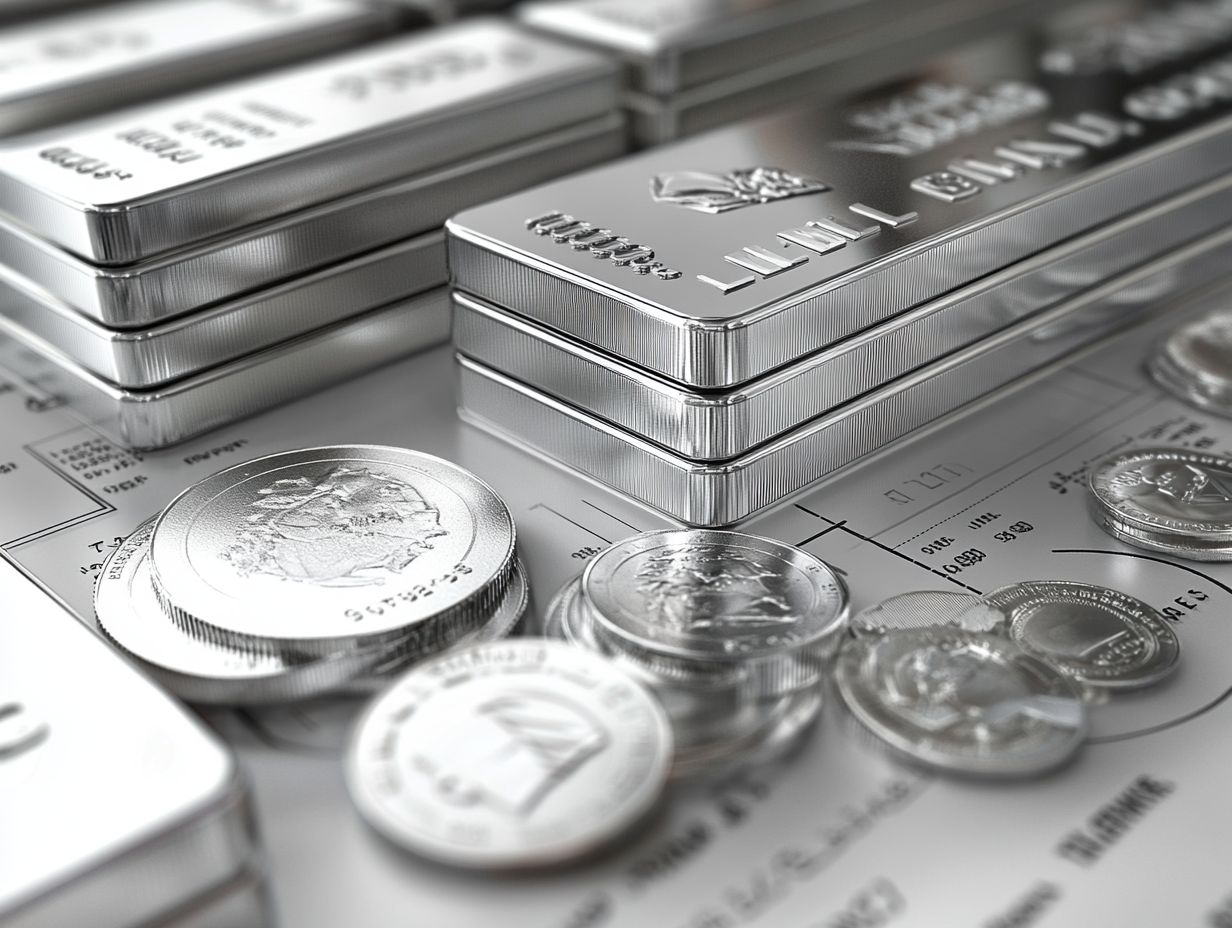
Investing in platinum offers a wealth of opportunities. However, it s essential to acknowledge the inherent risks and challenges that accompany this choice.
You ll need to navigate market volatility, consider external economic factors, and grapple with increasing environmental and social concerns tied to mining practices.
Volatility and Market Factors
Volatility in the platinum market can be traced back to various factors, including shifts in investment demand and the overarching uncertainty of the economy, which often influences precious metals.
Throughout history, significant price fluctuations have been driven by international conflicts, policy changes, and increasing supply constraints. For example, during periods of currency instability or global economic crises, the appeal of platinum as a safe-haven asset becomes particularly pronounced. This leads to speculative buying that can cause sharp price increases, making it essential to stay informed about understanding investment trends in 2024.
Downturns in the automotive or jewelry sectors can severely reduce demand, resulting in plummeting prices. To effectively navigate these complexities, consider diversifying your portfolio, using strategies to protect your investment from losses, and staying well-informed about market trends and geopolitical developments that could shape the platinum landscape.
Environmental and Social Concerns
Environmental and social concerns surrounding platinum mining have gained attention, sparking vital discussions about sustainable practices and the ethical implications of sourcing this precious metal.
Platinum mining often leads to deforestation, soil erosion, and water pollution, raising red flags for environmentalists and local communities alike. As awareness increases, investors are paying closer attention to mining companies, not just for profitability but also for their commitment to responsible operations.
Many firms are launching initiatives aimed at reducing their carbon footprint and enhancing community welfare. They strive to strike a balance between economic gains and ecological preservation.
This shift toward corporate social responsibility is shaping investment decisions, as stakeholders increasingly prefer companies that demonstrate a genuine commitment to sustainable practices and ethical sourcing.
Frequently Asked Questions
What is the history of platinum as an investment metal?
Platinum has been used as a form of currency and a store of value for centuries, dating back to ancient Egyptian and South American civilizations.
How has the role of platinum in investment markets changed over time?
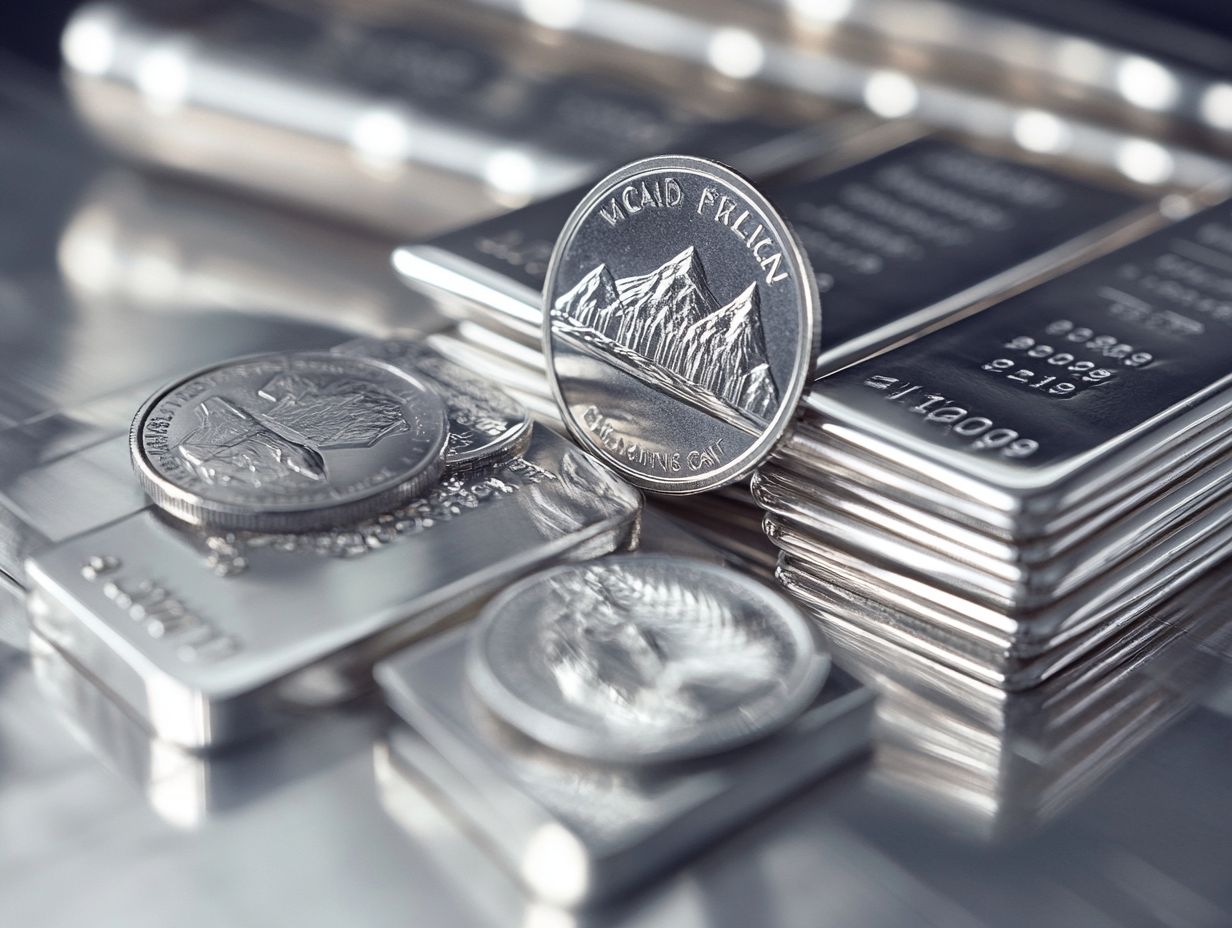
In recent times, platinum has primarily been used as an industrial metal in the automotive and jewelry industries, but it has also gained popularity as a valuable investment metal.
What factors have influenced the evolution of platinum in investment markets?
The price of platinum is heavily influenced by supply and demand, as well as economic and political factors, such as changes in mining production or global economic stability.
What makes platinum a smart investment?
Platinum is a rare and durable metal with a high melting point, making it highly resistant to wear and tear. It also has a variety of industrial uses, making it a valuable commodity with steady demand.
How has the demand for platinum in investment markets changed in recent years?
The demand for platinum as an investment has increased, particularly in emerging economies where it is seen as a symbol of wealth and status, as well as for its potential to diversify portfolios.
What are some potential benefits and risks of investing in platinum?
The steady demand for platinum and its finite supply can make it a potentially profitable investment. However, like any investment, there are also risks involved, such as fluctuations in market prices and geopolitical uncertainties.










